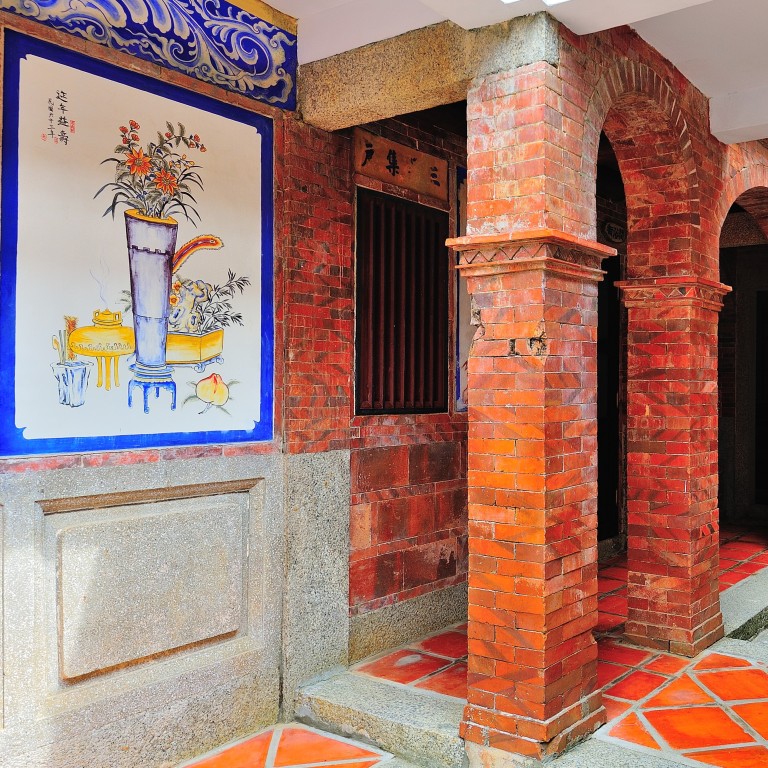
The grand houses on Taiwan’s Quemoy islands that were built by its wealthy migrants
- The Quemoy islanders left their homes in droves from the 17th century, many moving to Southeast Asia
- After making their fortunes, many sent money home to their villages and built spectacular residences
Tsai Kai-kuo was 16 when he migrated from Shuitou Village, on what is now Taiwan’s Quemoy archipelago (also known as Kinmen), to Payakumbuh, a city in Indonesia’s West Sumatra.
It was 1900 when Tsai packed his bags in hope of finding a more prosperous life. A lack of fresh water and poor quality soil made life difficult in Quemoy, and many of its natives moved away.
Travel-related trivia – factoids to send your pub quiz opponents packing
Quemoy islanders migrated in large numbers to Southeast Asia – Indonesia, Malaysia, the Philippines and Singapore – between the 17th and 20th century, according to historical records and family histories.
Tsai Huei-min, a Taiwanese politician and former associate professor of National Taiwan Normal University, wrote in a 2003 research paper, Island Biocultural Assemblages – The Case of Kinmen Island, that in the 14 years from 1915 to 1929, the archipelago’s population plunged from 70,400 to 37,500.
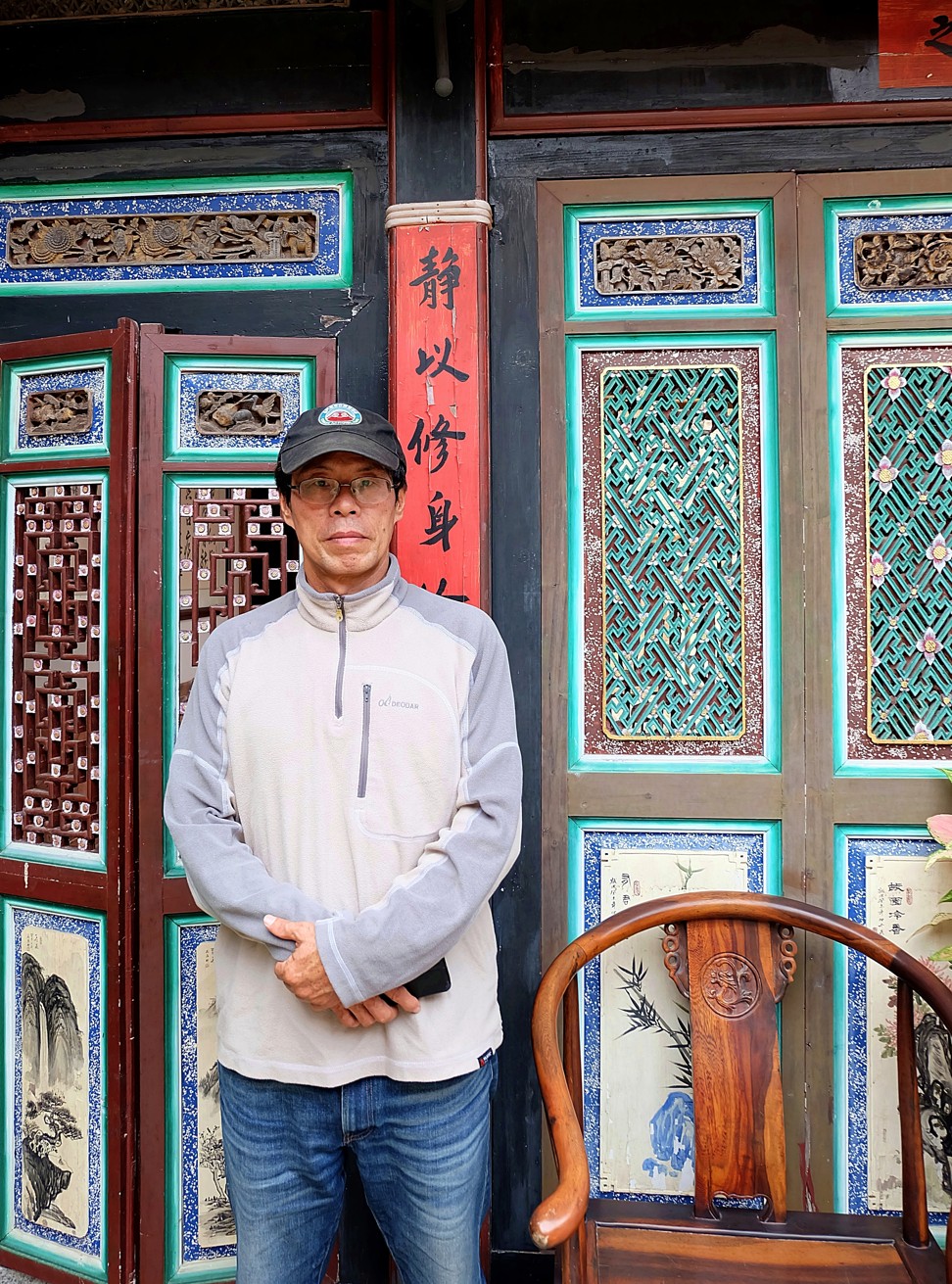
The islands are situated only a few miles offshore from China’s Fujian province. Today, it takes only 30 minutes by ferry from Quemoy to reach the city of Xiamen, which was historically a transit point for migrants moving south.
In Payakumbuh, Tsai Kai-kuo initially made a living as a labourer, before becoming a merchant and selling locally sourced products such as tobacco, bananas and pepper to the Dutch colonists in what was then the Dutch East Indies. He later married a local Chinese woman.
As he began to accumulate wealth, he sent money back to his elder brother in Quemoy to build a Minnan-style house, an architectural style native to Fujian, characterised by an upturned “swallowtail” roof ridge. He returned to Quemoy three times between 1925 and 1930 to oversee its construction.

Structurally unchanged since it was built, Feng Mao Lin Zhi is now a nine-room bed and breakfast hostel run by Tsai Chi-chuan and his younger sister – two of Tsai Kai-kuo’s grandchildren.
“The exterior of the house is exactly the same as it was in 1931,” says Tsai Chi-chuan. He adds that the house was renovated in 2002, before the property opened to paying guests in 2003.
Tsai Huei-min points out in her research paper that remittances sent from overseas Kinmenese contributed significantly to the income of the remaining islanders, and the more successful migrants left their mark through the grand houses they built in their native villages.
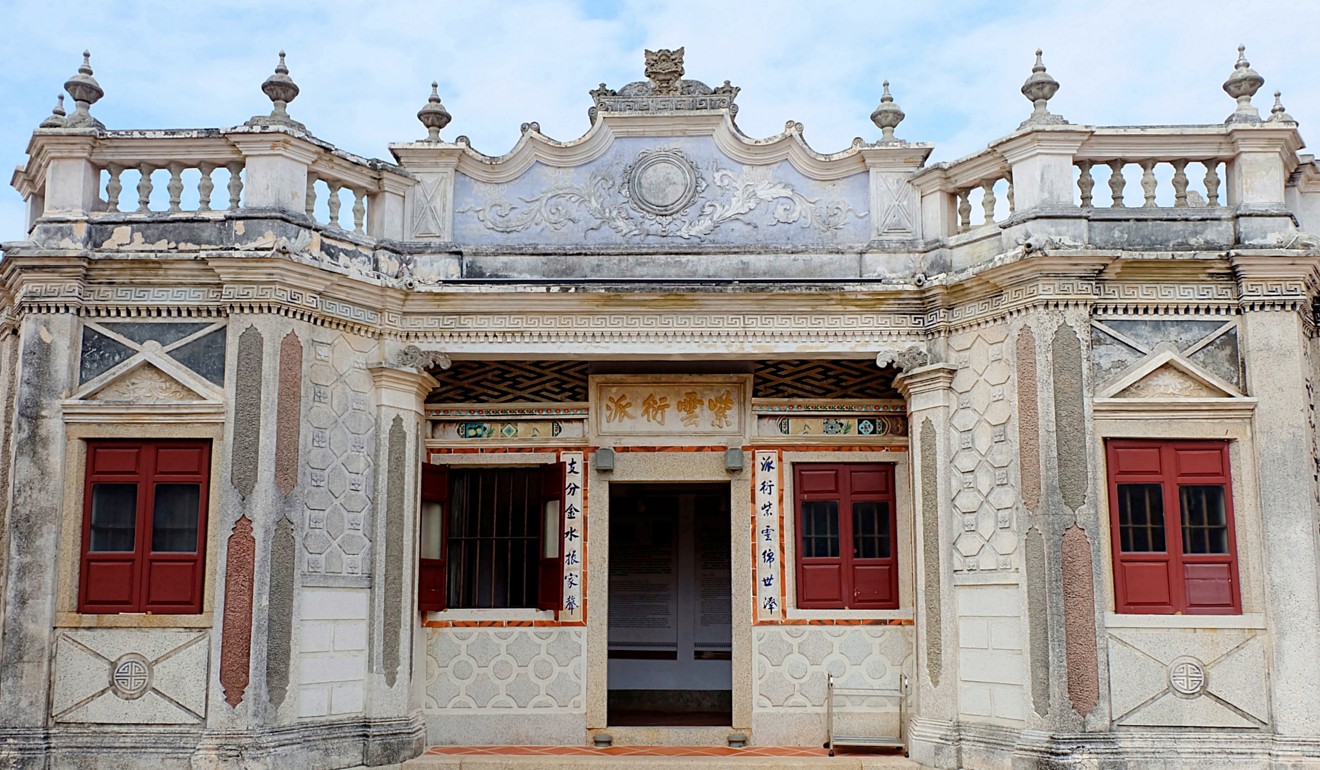
Another success story is that of Huang Hui-huang, who migrated from Shuitou Village to Balikpapan, a city in Indonesia’s East Kalimantan province. According to family records, Huang was a farmer in Quemoy and followed his relatives to Indonesia in search of work.
In Balikpapan, Huang sold groceries and fabrics. He made a small fortune and then returned to Shuitou to build a grand, two-storey house that reflected his elevated status.
Japanese tourists in Taiwan on the colonial history trail in Taipei, Tainan and Hualien
Built in a fusion of classical Western and traditional Chinese architectural styles, the house’s walls, gables, pillar tops, and pediment are decorated with motifs including the dragon, phoenix, lotus, and traditional peach-shaped longevity bun.
The exterior walls of Huang’s residence are finished with highly decorative majolica tiles, which were produced and exported in large numbers from Japan between the 1930s and ’40s.
A classical Western design element of Huang’s residence is the motif of a clock at the centre of a pediment. Like many such clock motifs on the migrants’ old houses in Quemoy, the hands are set at 12.40, as a reminder that “time is money” and industrious individuals should not take a midday break from work until such time.

“The Chinese in Southeast Asia had to work hard … you can’t rest at noon,” says Tseng Yi-jen, associate professor of architecture at Kinmen’s National Quemoy University.
Another example of architectural fusion can be seen on the enclosure wall surrounding the house, with decorative classical balustrades forming the lower half, and Chinese red tile work above. Pillars, topped with finials, feature engravings resembling old Chinese coins.
In 1933, Huang embarked on a project to built Deyue Tower. Piracy was rife along the shores of Fujian and Guangdong provinces, and the pirates kept a keen eye on the relatively wealthy households of Quemoy, requiring villagers to adopt defensive building strategies to safeguard their homes.
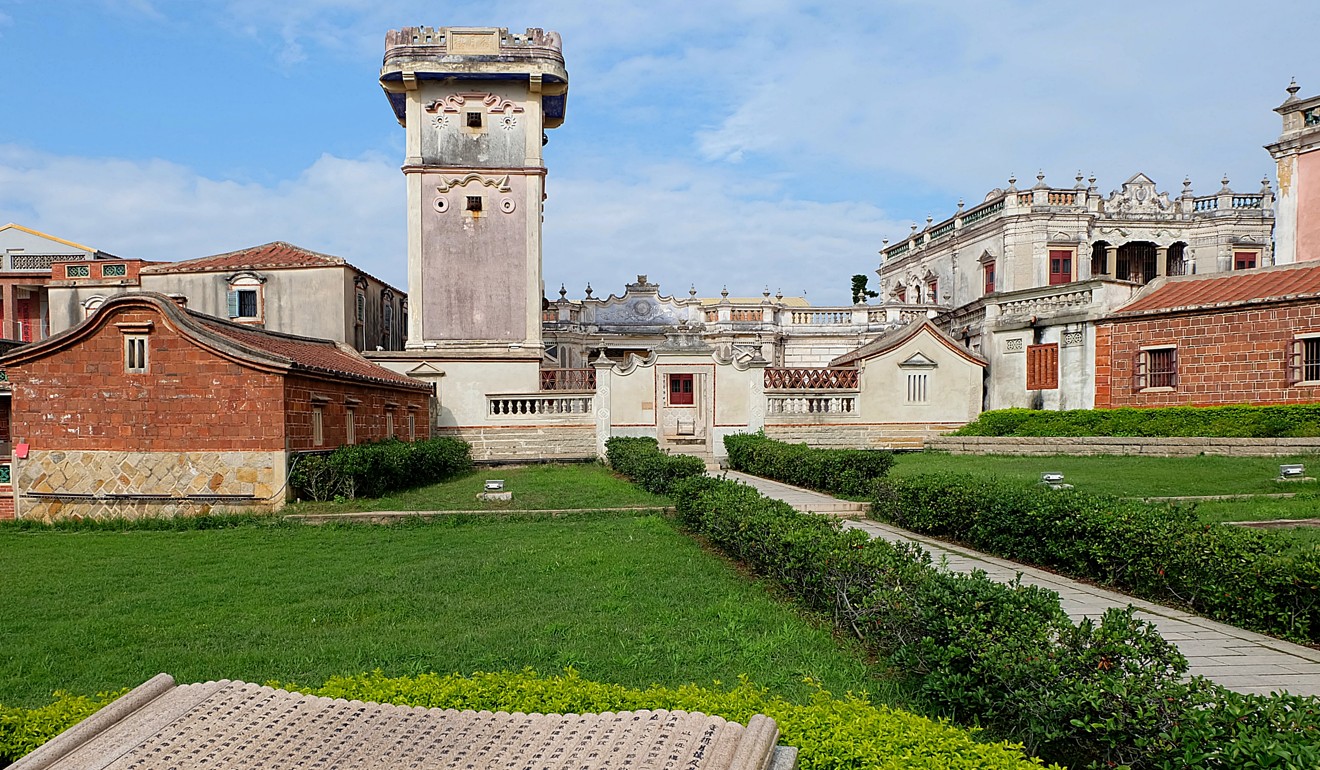
Deyue Tower is 11.26 metres high and has a 40cm-thick brick and reinforced concrete wall. Once the tower was completed, Huang’s household was able to keep an eye on the coastline from afar to check on the pirates’ movements.
Huang also built a one-storey “false house” alongside his real home, intended to deceive unwelcome visitors. A wall was erected between the two structures to block intruders from reaching the real house, but this has since been torn down.
For additional security, a tunnel was constructed below the Deyue Tower to serve as an emergency escape route from Huang’s home. If pirates stormed the area, the house’s residents would be able to crawl through the tunnel to reach the tower. They could then climb to the top and pull up the portable wooden steps, thus keeping the intruders at bay.

Huang lived in his Quemoy house for a few years before heading back to Indonesia during the Japanese occupation of Quemoy between 1937 and 1945.
Huang’s house is now a museum illustrating how overseas Chinese used to live in Southeast Asia. Items include clothing, porcelain and plastic reproductions of foods they would have eaten.
Tseng says Kinmenese migrants often favoured classical Western architecture because they found it beautiful. They would come across buildings in what are today Indonesia, Malaysia and Singapore, which were then colonised by Britain and the Netherlands.
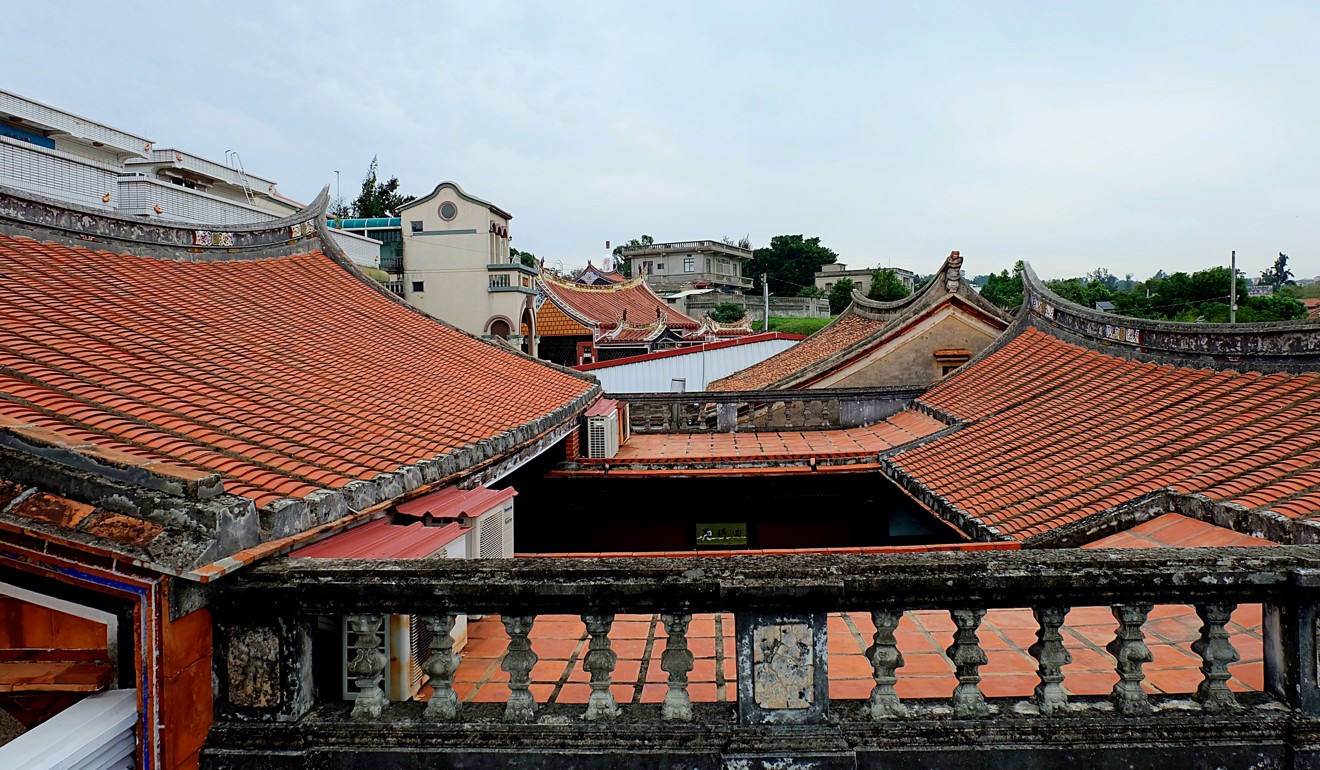
At least 133 such homes were built in Quemoy throughout 51 villages and towns – at least 15 of them in Shuitou.
In most cases, the houses have been left abandoned by the original owners’ descendants and fallen into a derelict state.
Today, these old homes are being protected as part of the Kinmen National Park, which was established in 1995. Many of the structures are classed as eco-museums and tell the stories of overseas Kinmenese, illustrating the link between Southeast Asia and people from the islands.

“The most difficult thing [in preserving the buildings] is figuring out ownership, because a lot of Kinmenese returned to Southeast Asia,” says Su Cheng-chi, deputy director of Kinmen National Park. “However, we need to trace each and every one of the buildings’ owners.”
The first step in tracking down the rightful owner involves poring over historical documents, and asking village elders in Quemoy for connections that could help trace the former occupants.
If they are able to trace the owners, national park officials will make contact, try to organise a meeting with them in whichever country they have migrated to, and ask if they would be prepared to sign a contract handing over management of the property.
Under the terms of the contract, the national park board will cover the entire cost of repairs and management of the building, while maintaining ownership of the property for 30 years.
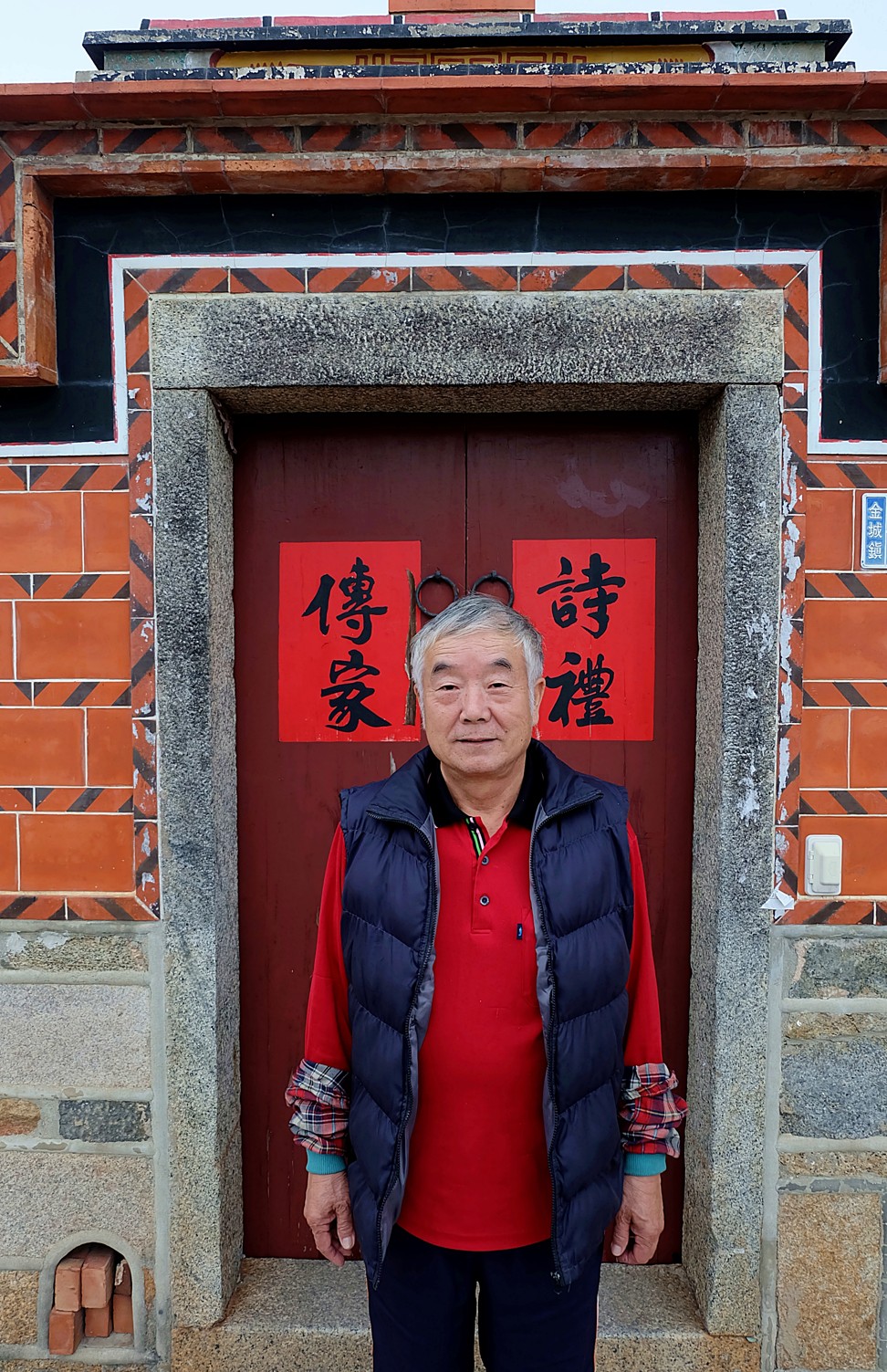
In 2005, Kinmen National Park officials travelled to Indonesia to deliver the contract to the owner of the Huang family complex, paving the way for the restoration of Deyue Tower, together with its real and fake houses.
Akame – indigenous Taiwanese food in the mountains of Pingtung
Renovation of Huang’s old properties began in April 2007 and was completed eight months later at a cost of NT$20.15 million (US$3.9 million).
Su says Kinmen National Park hopes that, in the future, the Taiwanese government will recognise the unique value of the old homes in Quemoy and afford them proper legal heritage status.
Such protection would ensure that the government could be more involved in preserving these historic buildings, instead of just depending on the owners’ approval to repair them.
How to get there Far Eastern Air Transport, Mandarin Airlines and UNI Air operate daily flights between Taipei and Quemoy.

